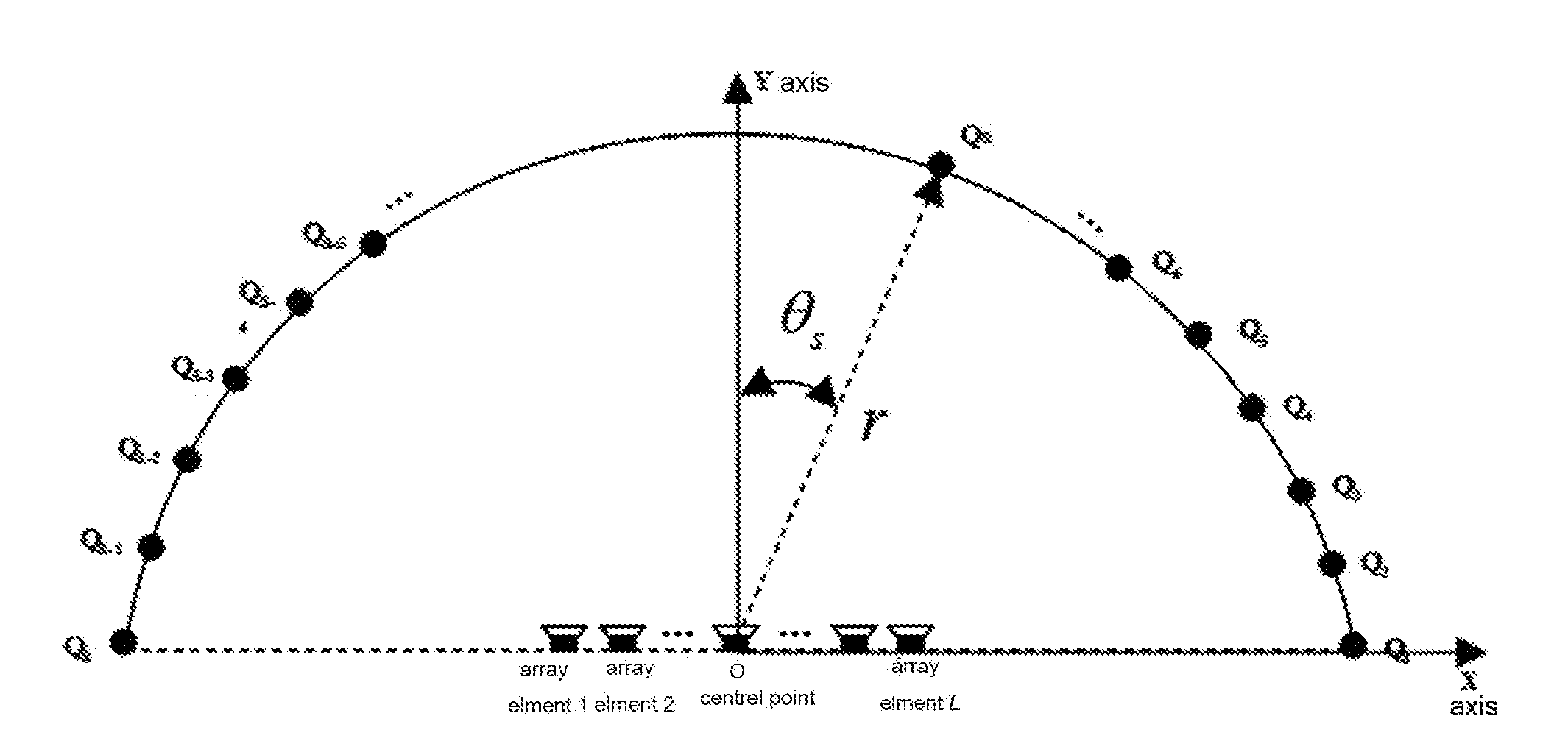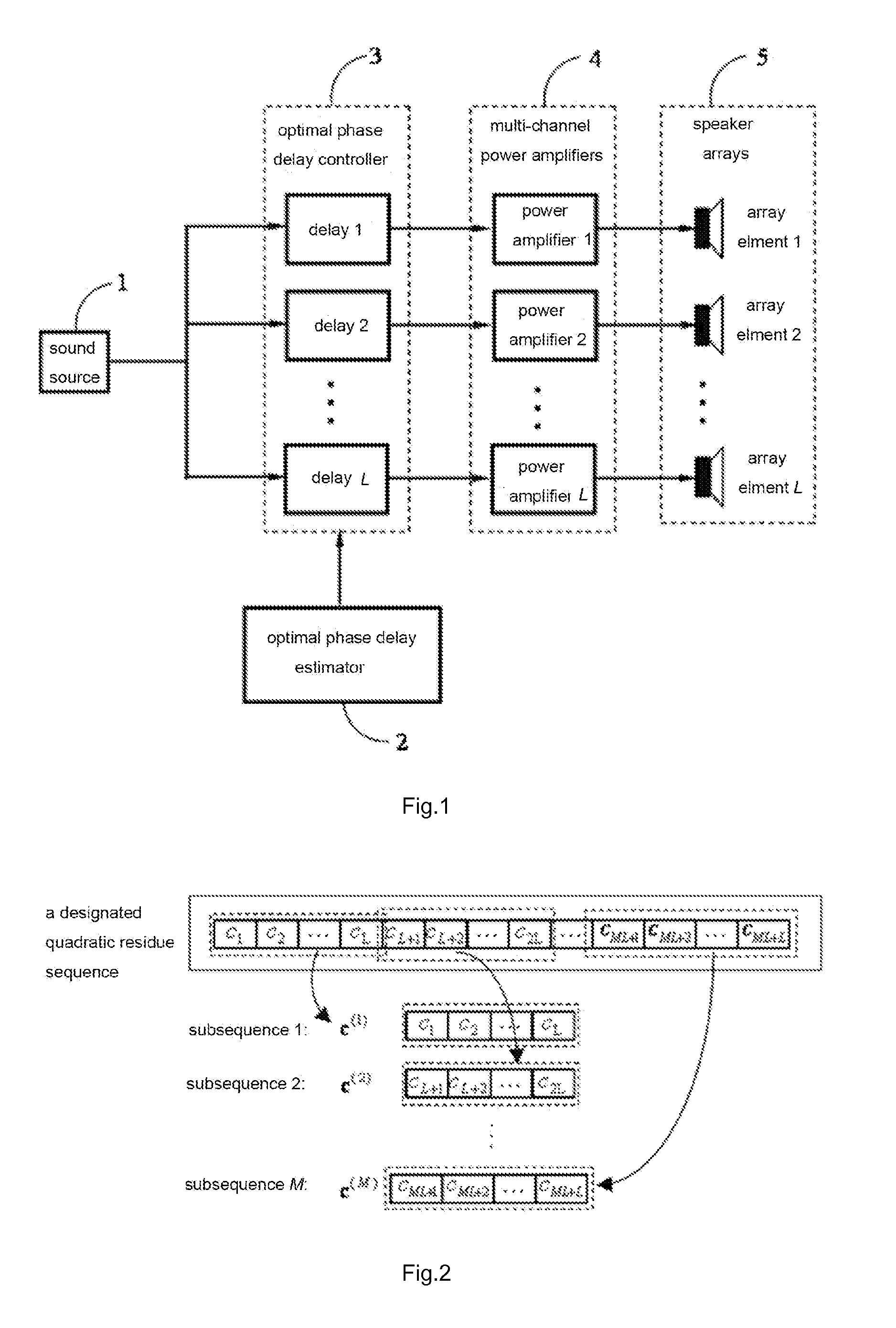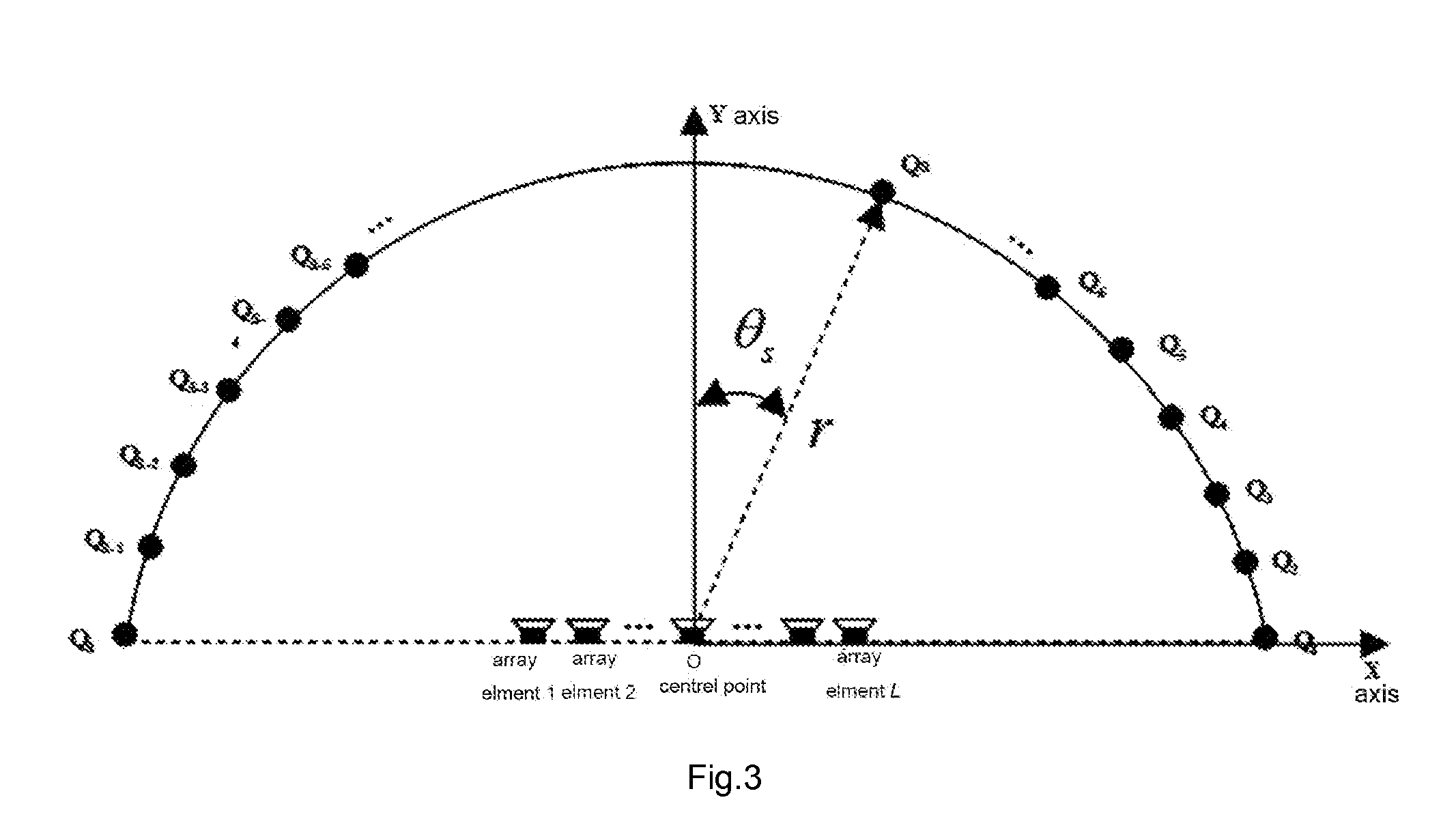Method and device for controlling speaker array sound field based on quadratic residue sequence combinations
a technology of sound field and sequence combination, applied in the direction of transducer details, stereophonic arrangments, electrical transducers, etc., can solve the problems of low radiation efficiency of sound reproducing system, complex physical implementation of these methods, and non-uniform characteristics of the spatial distribution of superposed sound field, so as to simplify the process of designing delay vectors and improve the accuracy of uniform sound field
- Summary
- Abstract
- Description
- Claims
- Application Information
AI Technical Summary
Benefits of technology
Problems solved by technology
Method used
Image
Examples
example 1
[0069]In this embodiment, provided that the frequency of sound source signals is 5 KHz, a radiation model of array sound field is established according to the input parameters of the speaker array, such as number of array elements, the space between adjacent elements, caliber of speaker, locations of elements as well as locations of observation points, then a designated quadratic residue sequence is blocked into subsequences which are combined orderly to generate combined sequences, and the phase delay vectors are designed as φ7{1}, φ7{1,2}, . . . , φ7{1, 2, . . . , 2857} respectively by utilizing the combined sequences, these phase delay vectors are used to control the speaker array respectively to generate sound pressure amplitude vectors {circumflex over (p)}fw,1, {circumflex over (p)}fw,2, . . . , {circumflex over (p)}fw,2857, the variance sequences of these sound pressure amplitude vector sequences are calculated as var({circumflex over (p)}fw,1), var({circumflex over (p)}fw,2)...
example 2
[0072]In this embodiment, provided that the frequency of the sound source signals varies from 100 Hz to 20 KHz pointwisely in terms of a frequency interval of 100 Hz, in the case of singe frequency input, the uniformity of sound field distribution of the array in three cases is compared and analyzed as follows:
[0073]In case 1, the phase delay control is not applied to the array, in the case of single frequency input, the sound pressure distribution characteristics of the array within the desired area are observed.
[0074]In case 2, array delay control is performed by utilizing the phase delay vector designed based on single quadratic residue sequence described in document 6, in the case of single frequency input, the sound pressure distribution characteristics of the array within desired radiation area are observed. In this case, the quadratic residue sequence is c7=[0 1 4 2 2 4 1]T and the phase delay vector designed according to such sequence is
ϕ7=c7×2π7,
and array delay control is a...
example 3
[0078]In this embodiment, provided that the frequency of the sound source signals varies from 100 Hz to 20 KHz pointwisely in terms of a frequency interval of 100 Hz, in the case of wideband input of 100 Hz to 20 KHz, the uniformity of sound field distribution of the array in three cases is compared and analyzed as follows:
[0079]In case 1, the phase delay control is not applied to the array, in the case of wideband input of 100 Hz to 20 KHz, the distribution characteristics of sound pressure of the array within the desired area are observed.
[0080]In case 2, delay control is performed to the array utilizing the phase delay vector designed based on single quadratic residue sequence mentioned in document 6, in the case of wideband input of 100 Hz to 20 KHz, the distribution characteristics of sound pressure of the array within desired radiation area are observed. In this case, the single quadratic residue sequence is c7=[0 1 4 2 2 4 1]T and the phase delay vector designed according to ...
PUM
 Login to View More
Login to View More Abstract
Description
Claims
Application Information
 Login to View More
Login to View More - R&D
- Intellectual Property
- Life Sciences
- Materials
- Tech Scout
- Unparalleled Data Quality
- Higher Quality Content
- 60% Fewer Hallucinations
Browse by: Latest US Patents, China's latest patents, Technical Efficacy Thesaurus, Application Domain, Technology Topic, Popular Technical Reports.
© 2025 PatSnap. All rights reserved.Legal|Privacy policy|Modern Slavery Act Transparency Statement|Sitemap|About US| Contact US: help@patsnap.com



